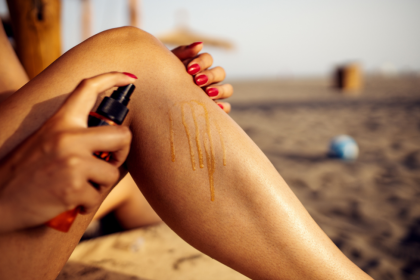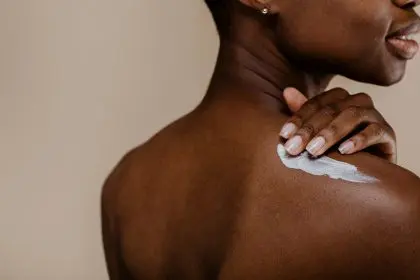Ever spent a small fortune on that miracle hair product your friend swears by, only to have it leave your hair looking worse than before? Or followed a viral hair care routine to the letter without seeing any of the promised results?
The culprit behind these disappointing experiences might not be the products themselves, but something most people have never even heard of — hair porosity.
This overlooked hair characteristic could explain why the exact same products work magically for some people and disastrously for others. And once you understand it, it could revolutionize your entire approach to hair care.
What porosity actually means for your strands
Think of your hair strands like tiny drinking straws, each covered with microscopic shingles called cuticles. These cuticles can lie flat against the hair shaft or stand more open, creating different levels of porosity — essentially how easily water and products can enter and exit your hair.
Low porosity hair has tightly sealed cuticles that resist moisture. Products tend to sit on top rather than absorb, making hair prone to buildup and looking weighed down or greasy despite your best efforts. Water beads up on this hair type before slowly penetrating, and drying time feels endless.
High porosity hair has widely open or damaged cuticles that allow moisture to enter quickly but also escape just as fast. This hair drinks up products eagerly but never seems satisfied, feeling dry again hours later. It gets soaking wet almost instantly in the shower but also dries surprisingly quickly.
Medium porosity falls between these extremes, with cuticles that allow an appropriate amount of moisture exchange. This hair type maintains styles well, holds color reliably, and generally behaves as expected with standard hair care approaches.
The frustrating truth? Most hair products and routines are designed with medium porosity in mind, leaving those at either end of the spectrum struggling to understand why widely recommended methods fail them so consistently.
Why your shower routine might be all wrong
Your porosity level should dictate everything from water temperature to how you apply conditioner, yet most of us use identical shower routines regardless of our hair’s actual needs.
Low porosity hair needs heat to open those stubborn cuticles. Lukewarm or cool water — often recommended as gentler for all hair types — actually works against low porosity strands by further sealing already tight cuticles. These hair types benefit from warmer water and even steam treatments to allow products to penetrate effectively.
Conversely, high porosity hair benefits from cooler water temperatures that help partly close those wide-open cuticles. Hot water, while feeling luxurious, can exacerbate frizz and moisture loss in already vulnerable strands.
The timing of your routine matters tremendously too. Low porosity hair needs products applied to soaking wet hair to help moisture sneak in alongside water molecules, while high porosity benefits from products applied to damp rather than dripping wet hair to maximize absorption.
Ever wondered why deep conditioning treatments leave your hair feeling like straw despite promises of silky softness? If you have high porosity hair, you might need to leave that treatment on for half the recommended time. If your porosity is low, you might need twice as long or added heat for effectiveness.
The product ingredients that are sabotaging your hair
That ingredients list on the back of your hair products might as well be written in another language for most people. But understanding just a few key components through the lens of porosity can transform your product selection process.
For low porosity hair, heavy oils and butters like coconut oil, shea butter, and castor oil often create disaster scenarios. Despite being marketed as ultra-moisturizing, these ingredients typically can’t penetrate tight cuticles and instead create buildup that makes hair look dull and feel dirty even right after washing.
These same heavy ingredients are exactly what high porosity hair craves. Without them, highly porous strands lose moisture within hours and become frizzy, dry, and prone to breakage. The oils that suffocate low porosity hair provide crucial sealing for moisture-leaking high porosity strands.
Protein is another wildly misunderstood ingredient that works differently based on porosity. High porosity hair, with its damaged or missing cuticles, generally needs protein to temporarily patch those gaps. The right protein treatment can transform fragile, mushy strands into resilient, bouncy curls.
For low porosity hair, however, most protein treatments spell disaster. With intact cuticles already creating a solid barrier, adding protein often results in brittle, straw-like hair that breaks at the slightest touch. That strengthening treatment everyone raves about might be your hair’s worst nightmare.
The styling misconceptions making everything worse
Beyond washing and conditioning, porosity affects how you should style your hair for best results — yet generic styling advice rarely accounts for these critical differences.
Low porosity hair typically takes forever to dry naturally due to water trapped beneath those tight cuticles. Air drying, often promoted as healthier for all hair types, can leave these strands vulnerable to fungal growth and prolonged swelling that damages the hair shaft over time. Some controlled heat drying is often beneficial for this hair type.
High porosity hair dries quickly but often unevenly, creating unpredictable results with air drying methods. Heat styling, while seemingly convenient for this quick-drying type, can further damage already compromised cuticles without proper protection.
Product application techniques matter tremendously too. Low porosity hair benefits from applying products in small amounts to soaking wet hair, using prayer hands or glazing techniques to distribute evenly without disrupting the cuticle. High porosity responds better to scrunching or roping techniques that ensure maximum product penetration into thirsty strands.
Even how you hold your blow dryer matters. Low porosity benefits from drying with the cuticle direction to keep those scales smooth and flat, while high porosity improves with careful drying against the cuticle to help seal those open scales.
How to finally determine your own porosity
Now that you understand how crucial porosity is, how do you determine yours? Several simple at-home tests can provide insights.
The float test involves placing clean, product-free hair strands in a glass of water. Hair that floats for several minutes before sinking indicates low porosity. Hair that sinks immediately suggests high porosity. Hair that floats momentarily before slowly sinking points to medium porosity.
The spray bottle test is even simpler. Spray clean, dry hair with water and observe. If water beads up and sits on top, your porosity is low. If it disappears almost instantly, your porosity is high. If it gradually absorbs, you likely have medium porosity.
The slide test uses your fingertips to feel your hair strand from end to root. If it feels smooth, your cuticles are likely lying flat, indicating lower porosity. If it feels bumpy or rough, your cuticles are more raised, suggesting higher porosity.
For the most accurate assessment, try all three methods and look for consistent results. Keep in mind that different sections of your hair may have different porosity levels, especially if you have heat or color damage on some parts but not others.
Creating your porosity-specific routine
Armed with knowledge about your unique porosity, you can finally build a routine that works with your hair’s actual needs rather than against them.
For low porosity hair, focus on:
- Clarifying regularly to remove inevitable buildup
- Using lightweight, liquid-based products with smaller molecules like aloe vera juice and flaxseed gel
- Applying products to soaking wet hair in sections
- Incorporating steam or heat with deep conditioning treatments
- Avoiding heavy butters, oils and protein-heavy products
For high porosity hair, prioritize:
- Moisture-rich, cream-based products with emollients
- Leave-in conditioners applied to damp rather than soaking hair
- Regular protein treatments to temporarily fill cuticle gaps
- Sealing with heavier oils after moisturizing
- Cool water rinses to help close cuticles
For medium porosity, you’re in luck — most mainstream products will work well for you. Focus on maintenance to prevent damage that could push you toward high porosity.
The environmental factors changing your porosity
Here’s something most articles won’t tell you — your porosity isn’t necessarily fixed for life. Various factors can alter your hair’s cuticle structure over time.
Heat styling, chemical processes like coloring or perming, and environmental damage from sun exposure can raise your cuticles, shifting you toward higher porosity. This explains why virgin hair often behaves differently than processed sections, even on the same head.
Hard water minerals can build up on low porosity hair, exacerbating its tendency toward product resistance. Using filtered water or occasional chelating treatments can make a dramatic difference.
Humidity levels affect different porosities in opposite ways. High porosity hair absorbs atmospheric moisture in humid conditions, creating frizz from excess swelling. Low porosity hair repels this moisture but can still frizz as humidity pushes against those tightly closed cuticles.
Understanding these environmental influences helps explain why your hair might behave differently on vacation, after swimming, or even in different seasons.
Why porosity knowledge saves more than just your hair
Beyond better hair days, understanding porosity can save you significant money and frustration. Instead of buying every trending product hoping for that miracle result, you can selectively invest in formulations actually designed for your specific needs.
Those elaborate 10-step routines might be perfectly suited for someone with different porosity than yours. Your optimal routine might involve fewer products applied more strategically, saving you time and shelf space.
Perhaps most importantly, recognizing that hair care is not one-size-fits-all liberates you from feeling like you’re doing something wrong when widely praised techniques fail you. Your hair isn’t difficult or defective — it simply has specific needs that generic advice doesn’t address.
The next time someone insists you absolutely must try their holy grail hair product, you can smile knowing that their porosity might make that product perfect for them and all wrong for you. And instead of chasing endless product promises, you can build a routine based on what your unique hair structure actually needs.
Understanding porosity won’t just transform your hair — it will transform your relationship with it, replacing frustration with informed care tailored specifically to your strands. That’s a breakthrough worth far more than any miracle product could ever deliver.

















